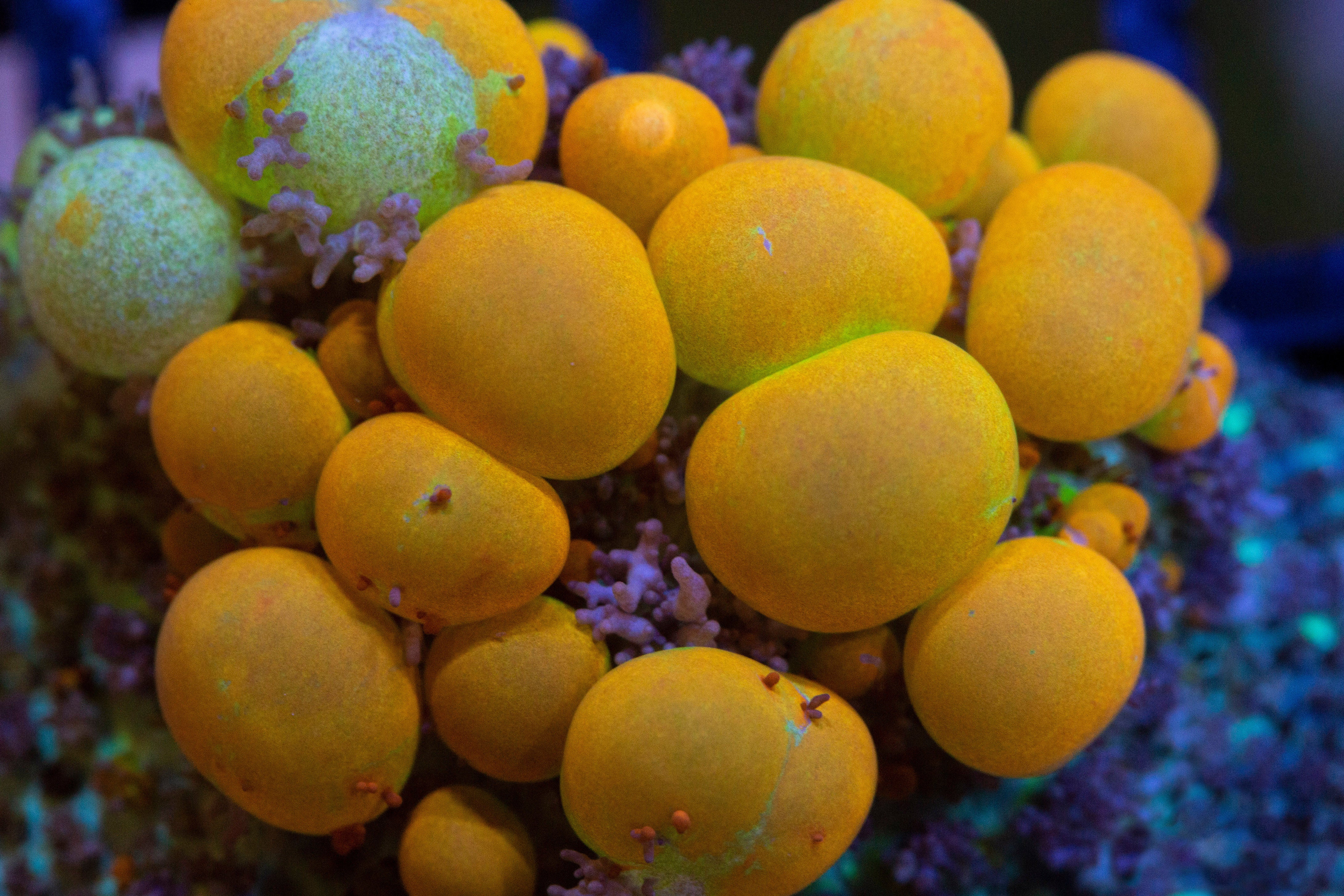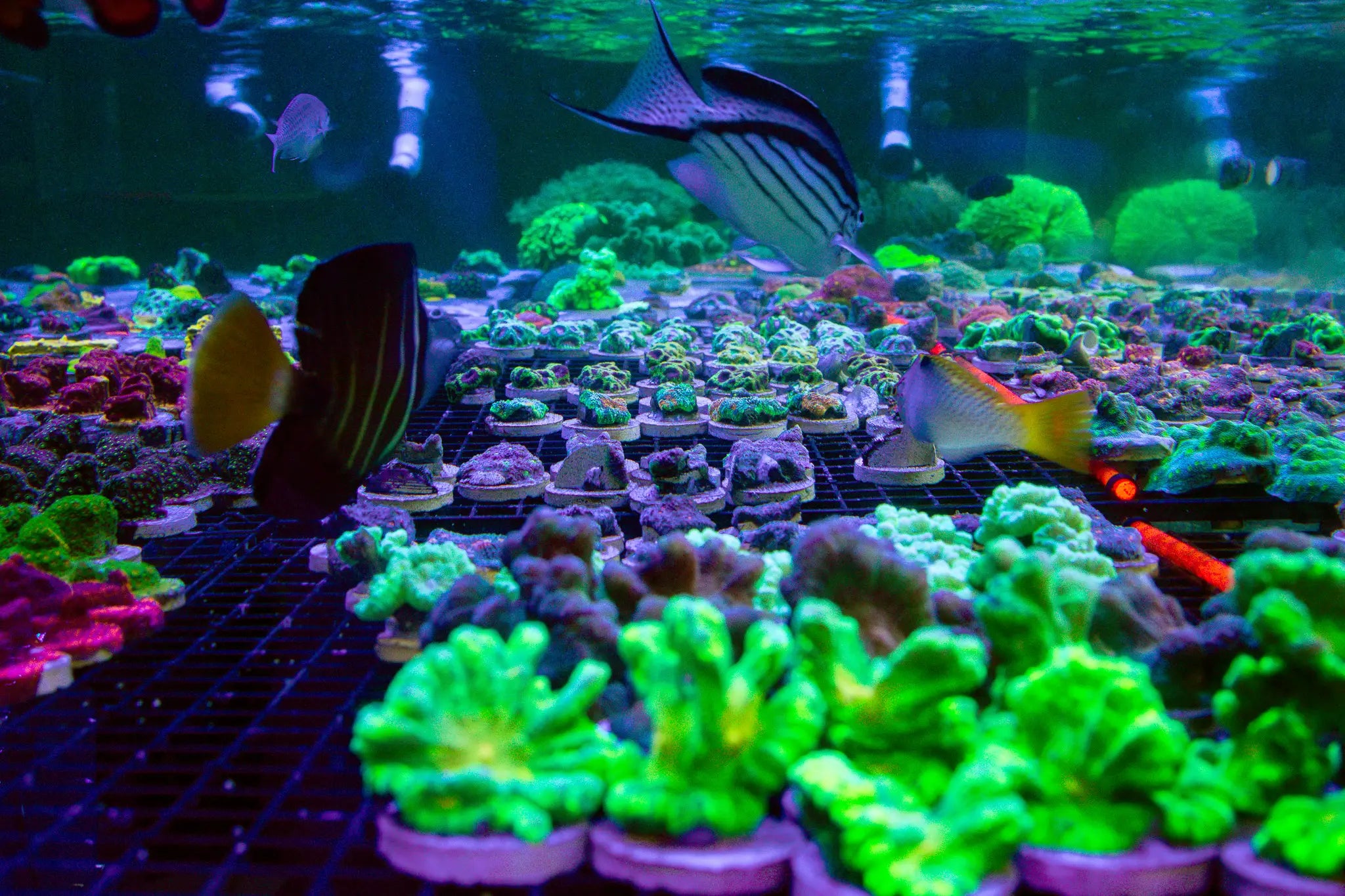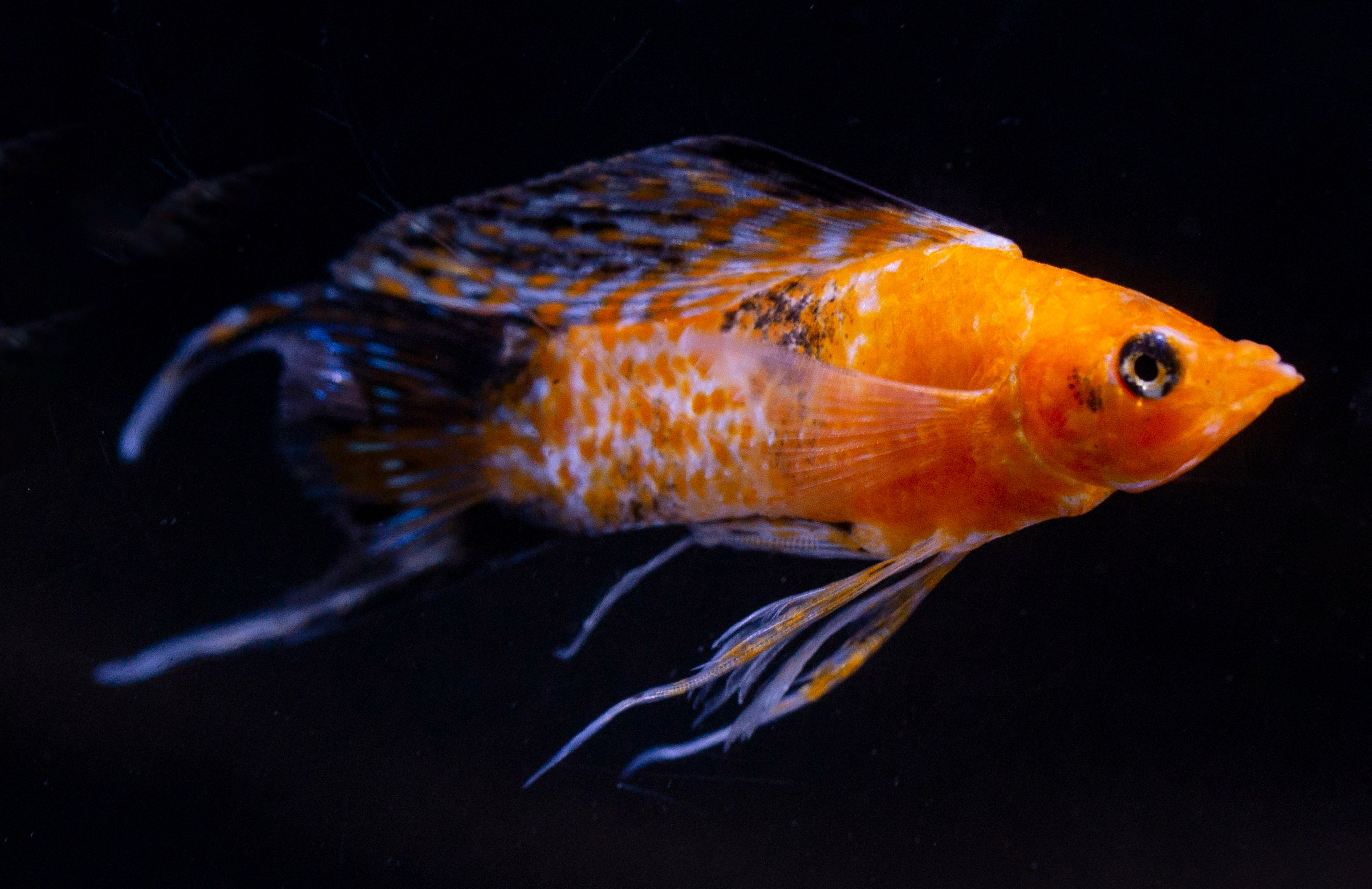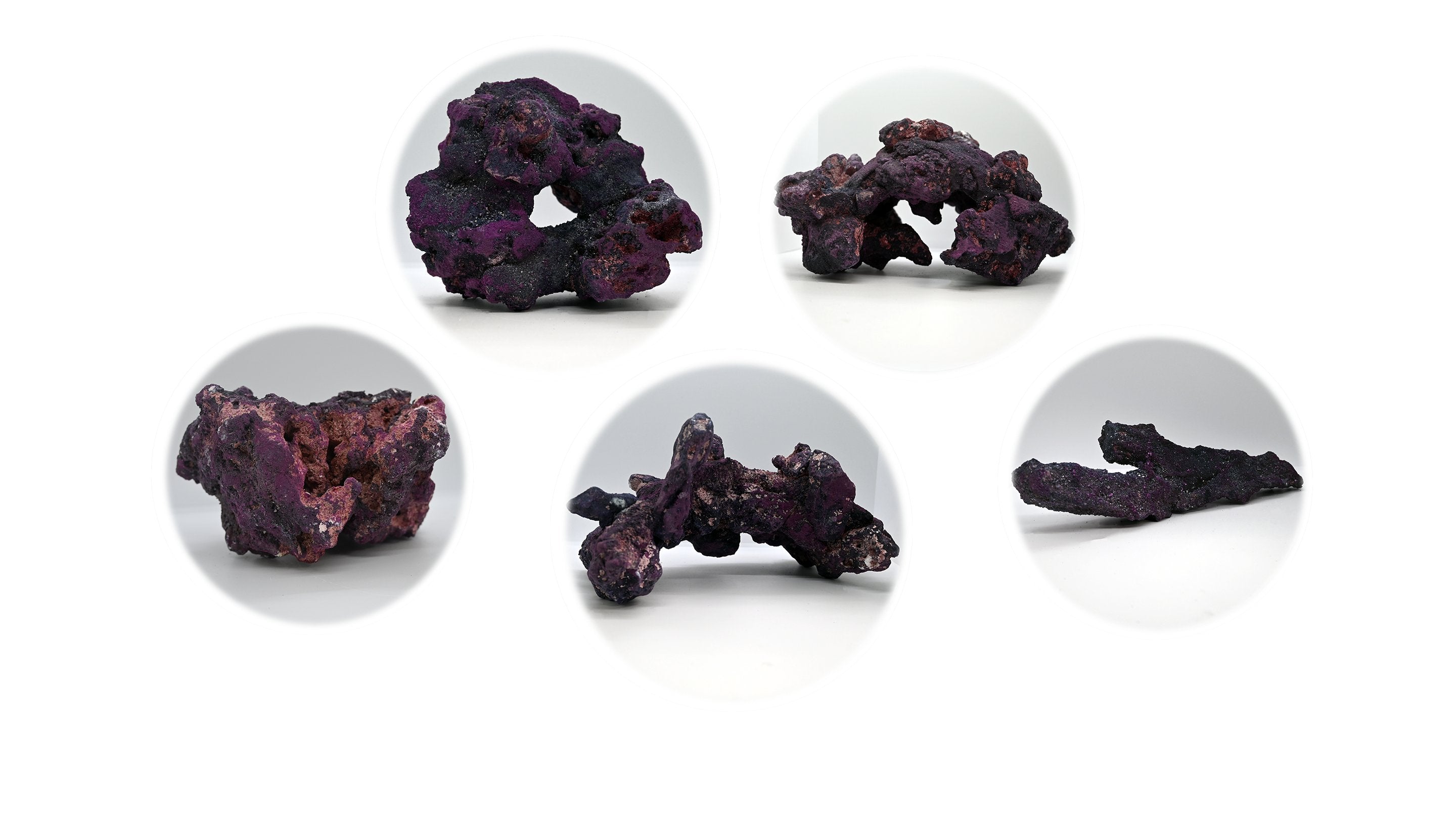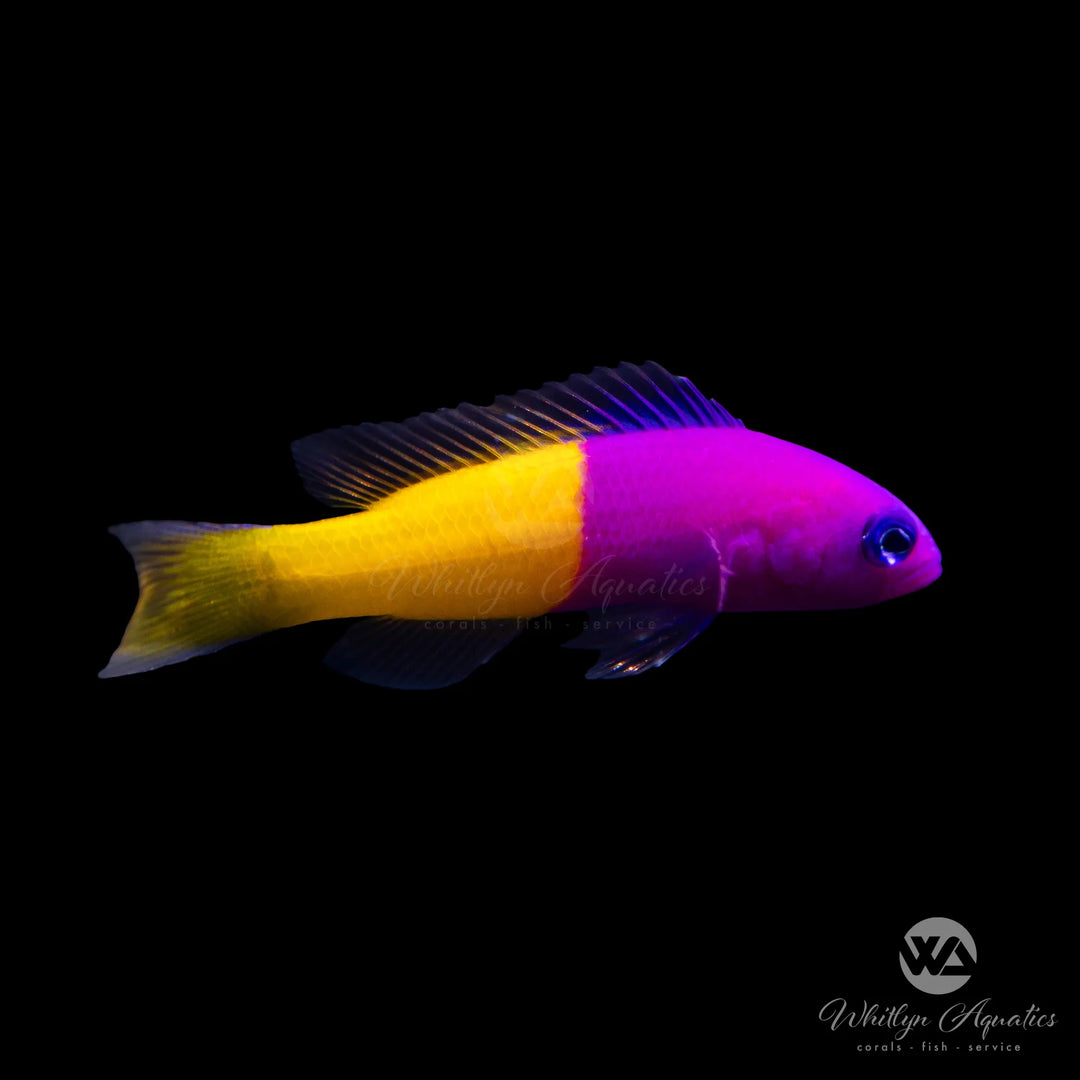
Bicolor Dottyback - Pictichromis paccagnellae
- In stock, ready to ship
- Backordered, shipping soon
The Bicolor Dottyback is a small, eye-catching saltwater fish known for its distinct and vivid coloration. This species is popular among marine aquarists for its striking appearance and hardy nature, making it an attractive addition to reef tanks and marine setups.
Description:
• Common Name: Bicolor Dottyback
• Scientific Name: Pictichromis paccagnellae
• Family: Pseudochromidae
• Size: Up to 3 inches (7.5 cm)
• Coloration: The front half of the body is a bright magenta or purple, while the back half is a contrasting vibrant yellow, creating its characteristic “bicolor” look.
Native Region:
The Bicolor Dottyback is native to the Indo-Pacific region, including areas around Indonesia and the Philippines. It is typically found in reef environments, where it can hide among rocks and corals.
Aquarium Setup:
• Tank Size: Minimum of 20 gallons for a single fish.
• Substrate: Sand or crushed coral substrate mimics its natural environment.
• Decor: Provide plenty of live rock and hiding spaces, such as caves and crevices, to satisfy its territorial nature.
Water Parameters:
• Temperature: 75-80°F (24-27°C)
• pH: 8.1-8.4
• Salinity: 1.020-1.025 specific gravity
• Hardness: 8-12 dKH (carbonate hardness)
Care Level:
• Difficulty: Easy to moderate
• Diet: Carnivorous; feeds on meaty foods such as brine shrimp, mysis shrimp, and finely chopped seafood. High-quality marine pellets and flakes are also accepted.
• Behavior: The Bicolor Dottyback is semi-aggressive and can be territorial, especially in smaller tanks or when housed with similarly shaped or sized fish. It does best when kept with other peaceful or semi-aggressive species.
Additional Tips:
• Tank Mates: Suitable tank mates include larger, non-aggressive fish. Avoid housing with small, timid fish or other dottybacks, as they may exhibit aggressive behavior.
• Reef Compatibility: Safe with corals and invertebrates, making it an excellent choice for reef tanks.
• Breeding: In captivity, Bicolor Dottybacks are known to lay eggs in hidden locations. Breeding pairs may become more territorial during this time.





